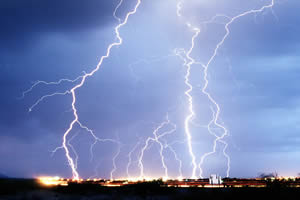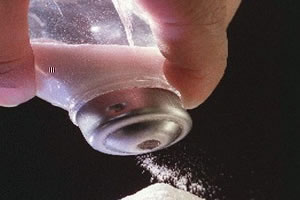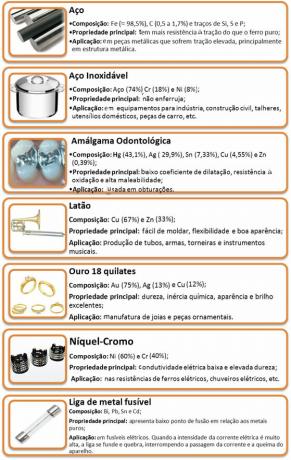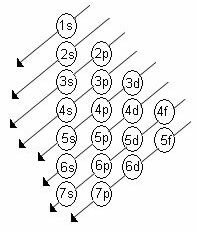At ionic substances are those that have at least one ionic bond, that is, when there is definitive transfer of electrons from one of the atoms to another, forming ions. The atom of the element that lost the electrons takes on a positive charge and is an ion called the cation, while the atom that received the electrons, getting a negative charge, is the anion.
They exist simple ions (only formed by an atom) and compound ions (formed by groups of atoms of different chemical elements that, together, gained or lost one or more electrons). Below we have a table with the list of anions and cations, simple and compounds, that form the ionic compounds.

Table of anions that form ionic substances

Table of cations that form ionic substances
Among the anions shown above, the most important are: chloride, carbonate, nitrate and sulfate. They bind with elements that are less electronegative than they are and form the main salts found in nature and in our daily lives. Chloride is a simple anion, while the other groups are all compound anions.
You salts are inorganic ionic substances that, according to ttheory of Arrhenius electrolytic dissociation, can be defined as compounds that in an aqueous medium release at least one cation other than H+ (or H3O+) and at least one anion other than OH-.
The salts formed by compound anions have ionic and covalent bonds, and the anions are formed by covalent bonds (with sharing electrons), and the bond between these anions and a metal or semimetal is ionic.
Do not stop now... There's more after the advertising ;)
For example, sodium nitrate (NaNO3) is formed by the ionic bond between the sodium cation (Na+) and the nitrate anion (NO3-), with the transfer of an electron taking place. Note below that there is this ionic bond, but the bond that forms the anion is covalent:

This, however, is just the unit formula. The ionic substances actually stick together, forming large clusters of well-defined geometric shapes that are called crystal lattices. This happens because of the electrostatic attraction that exists between these opposite sign charges, the ions end up attracting those closest, forming these lattices, in which several anions are around a cation and vice versa. The amount of ions that surround an ion of opposite charge is called the coordination number.
For example, next we have the copper sulfate salt (CuSO4) and an illustration of your crystalline reticulum:

Due to these arrangements, ionic substances have the following main properties:
They are solid at room temperature;
They have high melting and boiling points;
They are hard and brittle;
They conduct electrical current when dissolved in water and when melted.
Below we have the texts that explain how chloride, carbonate, nitrate and sulfate anions form, their constitution, properties, sources, importance, applications and examples of ionic substances that contain. Access each one of them to stay on top of all these details:
* Chlorides;
* Carbonates;
* Nitrates;
* Sulphates.
By Jennifer Fogaça
Graduated in Chemistry
Would you like to reference this text in a school or academic work? Look:
FOGAÇA, Jennifer Rocha Vargas. "Ionic substances of the group: chloride, carbonate, nitrate and sulfate"; Brazil School. Available in: https://brasilescola.uol.com.br/quimica/substancias-ionicas-grupo-cloreto-carbonato-nitrato-sulfato.htm. Accessed on June 27, 2021.
Ionic compounds, main characteristics of ionic compounds, bonding between ions, definitive transfer of electrons, electrostatic attraction forces between ions, negative and positive ions, anions, cations, ionic bonding, molecular structure he
Chemistry

Dissociation and Ionization, Italian Scientist Volta, Electric Current, Swedish Physical Chemist Svant August Arrhenius, Theory of Arrhenius, positive ions, cations, negative ions, anions, caustic soda, table salt, polar molecules, dissociation ionic,
Chemistry

Ionic bond, arrangements between ionic compounds, ionic agglomerates, sodium chloride, table salt, ionic substance, electrostatic attraction forces, chloride anions, sodium cations, polar solvents, positive ions, cations, negative ions, anions.



